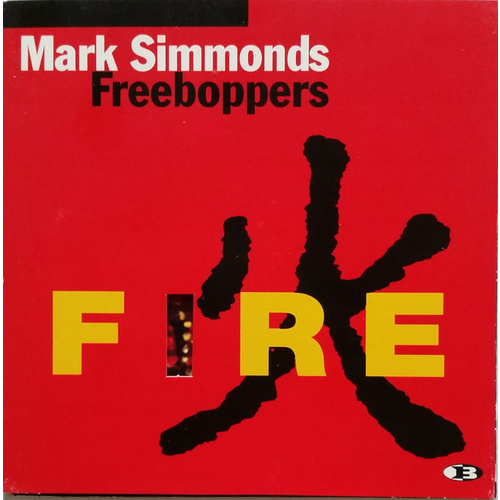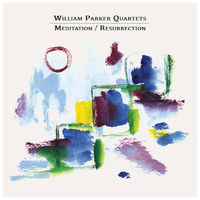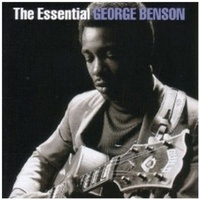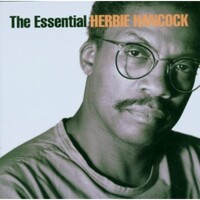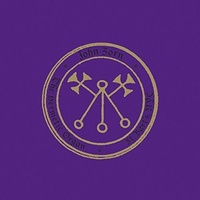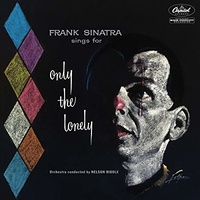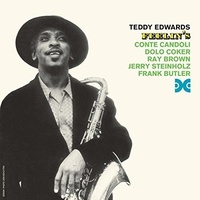Mark Simmonds Freeboppers - Fire
ARIA Winner 1995 - Best Jazz Album - 2 CD set
January 12th 2025. After 31 years in print we sold our last copy.
At this point in time we have no plans to reissue "Fire". We might put it up on bandcamp for a download. Keep in touch.
Aria Award for best jazz album in 1995.
"An essential Australian jazz cd by one of the few genius' I've ever heard play. This is the one and only album by the Freeboppers - every song they recorded at this session is on this 2 disc album. Mark's compositions, musicality and downight genius are heard on this album". Kieran Stafford - Birdland Records
FIRE was voted by the Australian public as the best Australian Jazz Album. EVER. ................
With Scott Tinkler, Steve Elphick and Simon Barker. Recorded live at Electric Avenue Studios direct to a 2 track vintage analogue Studer (which was rebuilt by Tim de Paravicini) and then mastered in 24 bit SBM this is a sonic marvel. The mix is what the band agreed on at the time and once it was down on tape that was it - no remixing or anything, so what you hear is what Mark and the band wanted you to hear. Everything that the tape captured is on the cd. And there's a lot to hear !
Turn it up LOUD to feel the Fire.
Music from this cd is featured in Emma Franz's documentary film "Intangible Asset Number 82"
Discogs profile:
Prominent in the Australian jazz scene throughout the 1970s, 80s and 90s, Mark Simmonds also worked in many other musical settings such as soul, funk groups The Dynamic Hepnotics (1985–1986), Jackie Orszaczky's Jump Back Jack, and also contemporary music groups such as Phil Treloar's Feeling to Thought, PipeLine and The Umbrellas. In addition to these, the Australian Rock database lists Simmonds as a member of Drain, Corroboree, Chris Turner Band, Silver Studs, Keys Orchestra, Moonlight, Ol' 55, Bentley's Boogie Band, and Renee Geyer Band. A post-Coltrane saxophonist with a huge sound, Simmonds led his own groups mostly under the name of The Freeboppers which held host to many of Australia’s most adventurous musicians. In December 1981, Mark Simmonds' Freeboppers played at the All Souls Feast Dance fundraising benefit at the Trades Union Club in Sydney, along with The Laughing Clowns, Dead Travel Fast, and performer and organizer, Jon Rose.
Two songs of The Freeboppers were featured on the KMA (Keys Music Association) compilation LP in 1982 entitled March of the Five Limbs. Mark Simmonds' Freeboppers released a full length double CD entitled 'FIRE' in 1993 on Birdland Records (BL002).The album won an Aria Award for Best Jazz Album in 1995. A song called Kings Cross Drag was included on the 1993 Vox Australis album, Beyond El Rocco : The Ultimate Australian Jazz Soundtrack.
Simmonds' collaborators include Steve Elphick (bass), Phil Treloar (percussion), David Adés (alto sax), Jamie Fielding (keyboards), Greg Sheehan (drums), Miroslav Bukovsky (trumpet), Peter Dehlsen (drums), Louis Burdett (drums), Peter Fine, Daniel Fine (sax), Steve Hunter (bass), Serge Ermöll (piano), Kees Steen (guitar), Rob Gador (bass), Michael Sheridan (guitar), Chris Abrahams (piano),[8] Cleis Pierce (violin), Samila Sithole (percussion), Andrew Gander (drums), Thierry Fossemalle (bass), Scott Tinkler (trumpet), Simon Barker (drums),[9] Azo Bell (guitar), Duncan Archibald (drums), Diane Peters (harp), Bobby Gebert (piano), Mark Shepherd (bass), Will Guthrie (drums), Scott Lambie (drums), Philip Rex (bass), Tony Buck (drums), Elliött Dalgléish (saxophones), Rick Caskey (bass), Charlie Owen (guitar).
In an article from the Sydney Morning Herald, 13 May 1987, jazz critic Gail Brennan wrote: "Mark Simmond's Freeboppers devastated the Basement with an unbroken hour-and-a-half orgy of rhythm and fire." The article reviews a double-bill with the Dale Barlow Quintet at Sydney's most renowned jazz venue, The Basement, on 11 May 1987. It goes on to say Mark "led a band that had played in public for a month (at the Piccadilly) and their confidence and cohesion were glorious to hear" and concludes; "It is not often that a reviewer of Australian jazz has no choice but to gush. This was one of those nights."
Mark retired from regular public performance in the early 2000s, but continued to play music with fellow musicians up until his death. His last live performance- a duet with Jeffrey Wegener, took place in Leichhardt, New South Wales, in 2019. Wegener says that Simmonds,on this occasion, "played magnificently".
Mark Simmonds was born in Christchurch, New Zealand. He passed away in Sydney, Australia, on 8 September 2020.
Sonic meteor who raced across our skies
SMH September 21, 2020 — 2.31pm
MARK SIMMONDS: 1955-2020
You'd look around the room and the see the other faces, blanched and wide-eyed, as though subjected to extreme G-forces. The sound of the saxophone, so overwhelming it seemed to hit you with the force of a shockwave, combined with the torrential emotions being conveyed to make a perfect musical storm.
This was a typical concert by Mark Simmonds, perhaps the most potent musician Australia has produced on any instrument in any idiom or era, and one of the world's key tenor saxophonists of the past 45 years.
Simmonds poured every atom of himself into each solo, and the effect across a concert was cumulative, leaving people both traumatised and exhilarated by music that was variously furious, wildly celebratory and devastatingly sad. It was also cumulative in its effect on Simmonds himself.
Simmonds, who has died after prolonged ill health, was born in Christchurch on July 21, 1955, the second son of Jean and Robert Simmonds. His father ran a commercial cleaning company and his mother was a landscape painter. Music pervaded the family, with Robert playing trumpet, Mark's brother, Derek, playing bagpipes and guitar, and Jean's nephews being the Brodie Brothers, a successful 1960s pop act.
When Mark was four, the family moved to Sydney, where Robert's business took on cleaning Sydney's early skyscrapers. Mark attended Neutral Bay Primary School for some six months before going to Burnside Primary when the family returned to Christchurch. In 1966, they relocated to Sydney permanently, with Mark going to Northbridge Primary School and then North Sydney Boys' High, where he began studying music.
Influenced by his brother's love of blues, Mark's first instrument was the guitar, which he also studied classically. By 15, he had a job at Palings music store and there discovered transcriptions of songs by such blues figures as Charlie Patton, Son House and Robert Johnson, and had learned about 100 pieces before hearing the originals, such records being rare and expensive.
At high school, he fell in love with early New Orleans jazz, collecting countless 78rpm records and taking up trumpet and then trombone. More by accident than design, he started at the roots of the tradition and worked his way forward, giving him a singular grounding.
In his blues phase, he'd been dismissive of jazz until he recognised that Louis Armstrong and Bessie Smith were also great blues artists. He'd wanted to sing but was not encouraged and so gravitated to the saxophone as a substitute, embracing the '30s jazz of tenor saxophone master Lester Young.
For his final school year, he went to Sydney Conservatorium, as did his friend, Martin Keys, a clarinetist, who opened his ears to classical music and bebop, whereupon Simmonds completed a 10-year musical odyssey by embracing the revolutionary jazz of Ornette Coleman, John Coltrane and Albert Ayler. He then enrolled in the newly established jazz studies course at the Con, run by US saxophonist Howie Smith, who also played in a band called the Jazz Co-Op, although Simmonds developed a deeper admiration for its drummer Phil Treloar and pianist Roger Frampton.
In the 1970s, he had a weekly residency at Morgan’s Feedwell, Glebe, with Treloar and bassist Jack Thorncraft. "For me at the age I was, that was like the dream machine," he told me in a 2007 interview. In 1979, Treloar formed the Australian Art Ensemble, with Simmonds and pianist Bobby Gebert, which recorded the first of only three major documents of Simmonds' playing. This volcanic album, easily among Australian jazz's most significant, was finally released in 2011 as Trio '79.
The trio received a grant to study in New York, which proved a pivotal, if not always edifying, experience. Simmonds found some of the knowledge and teaching laughably inadequate and was similarly disappointed by many concerts, with Sun Ra, Arthur Blythe (the only saxophonist he thought as original as Australia's Bernie McGann) and ex-Miles Davis saxophonist George Coleman the exceptions.
His studies with the latter were a world away from formulaic learning, and this deeper understanding opened up limitless possibilities. "Until the last day I played saxophone, I was still at the edge of learning something new," he said. He left New York no longer intimidated by the jazz tradition.
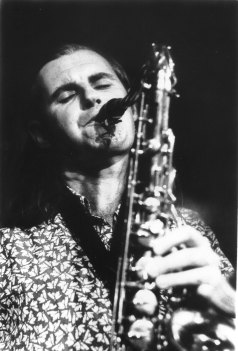
Mark Simmonds saxophonist Credit: Jane March
Back in Australia, he and Treloar worked extensively together, privately on complex rhythmic ideas and publicly in Treloar's Feeling to Thought project, which recorded in the late '80s, the extraordinary results released in 2012 as Primal Communication. Simmonds also collaborated with such diverse bands as KMA Orchestra, the Dynamic Hepnotics, Jackie Orszaczky's Jump Back Jack and Mara!.
His primary focus, however, was his own band, the Freeboppers, playing his startlingly original compositions, some of which he'd penned while still at school. He conceived of rhythm section parts as intrinsic to a piece's identity as the chords or melody, and sought to push players out of their comfort zones to expunge cliches. Every note had to carry meaning, and the music was a constant dialogue between Simmonds' twin desires: to control the outcome and to create an environment that maximised the players' creativity. He could obsessively cajole them on stage, yet amid the complexity he sought a core simplicity: "You have to be like a folk musician," he said. "You have to be that close to the earth all the time."
Many of Australia's finest players passed through the band, which made only one album: the aptly named Fire (1993), recorded by an especially strong incarnation, with trumpeter Scott Tinkler, bassist (and long-term Simmonds collaborator) Steve Elphick and drummer Simon Barker. Another incarnation followed before Simmonds broke up the band amid a firestorm of adversity. Substance abuse had been masking his bipolarity, and he decided to bow out of music and get a job as a hospital cleaner, but his life spiralled down until he was living on the streets for a while. A 2002 comeback at the Side on Cafe confirmed that performing was unendurable for him.
Now he was beset by endless well-meaning questions about why he'd stopped and when he'd start again. Beyond being physically unable to do so with poorly fitting dentures (after being assaulted), he didn't want to face the extreme highs and lows of performance. Instead he played recorder, re-engaged with blues guitar, taught himself piano, composed and eventually bought a soprano saxophone. Even when living on the streets, he was still studying music books.
"I haven’t fallen out of love with music," he told me, "but I fell out of love with performing." In 2018 ex-Laughing Clowns drummer Jeffrey Wegener coaxed him to play a gig in Leichhardt that would prove his last. Wegener said that Simmonds seemed to enjoy himself and played soprano brilliantly.
While there was always a volatile side, the intensely intelligent Simmonds could be gentle, amusing, kind and caring, and was extremely well read, with Byron and Lorca among his favourite writers. His influence on two generations of Australian musicians has been profound. He is survived by his brother, Derek, and ex-partners Louise Blackwell and Libby Angel.
John Shand
(5021456037308)
| SKU | 5021456037308 |
| Barcode # | 5021456037308 |
| Brand | Australian Independent - Birdland Records |
Be The First To Review This Product!
Help other Birdland Records users shop smarter by writing reviews for products you have purchased.


